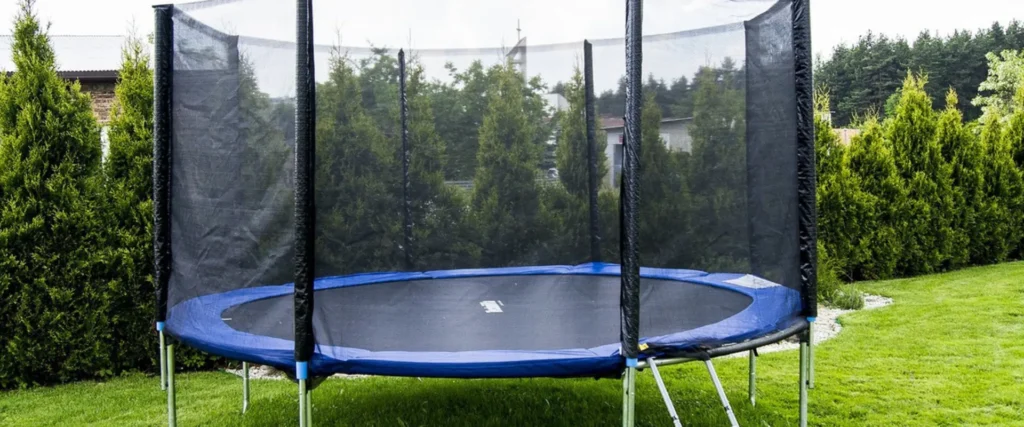Your backyard trampoline brings fun for both kids and adults. It’s a place for laughter, exercise, and lasting family memories. Over time, the mat wears out, and trampoline mat replacement becomes necessary to keep it safe and enjoyable. A damaged mat reduces bounce and increases the risk of injuries, so knowing when and how to replace it is important. This guide explains the process and helps ensure safe trampoline use for everyone.
Trampolines face harsh conditions. Sun, rain, and constant jumping all cause wear and tear. Regular checks, using a simple checklist, help you spot problems early. By staying proactive, you extend the life of your trampoline mat and keep your outdoor playhouse safe for fun.
This article covers everything about trampoline mat replacement. You’ll learn how to identify damage, choose the right mat, and install it securely. Each step is explained clearly so your trampoline remains a safe and enjoyable part of your outdoor space for years to come.
Top Reason for Trampoline Mat Replacement
A trampoline’s mat takes the brunt of every jump, so it wears out faster than other parts. A damaged mat can develop tears or holes, which may cause falls or injuries. Replacing it promptly ensures safe trampoline use and maintains a strong bounce.
Regular maintenance, including checking the mat, is key to a long-lasting trampoline. A checklist helps you spot small issues before they grow. Even a minor tear can worsen with use, leading to costly repairs or serious safety hazards. Staying ahead of damage saves time and money.
Trampoline mat replacement also improves performance. A fresh mat delivers a stronger and more controlled bounce, making jumps safer and more enjoyable. It’s a simple way to refresh your backyard adventures and keep everyone smiling.


Signs Your Trampoline Mat Needs Replacing
Knowing when to replace your trampoline mat prevents accidents and keeps playtime fun. Watch for these clear signs to decide if it’s time for a trampoline mat replacement.
Visible Damage
Inspect the mat for tears, holes, or frayed edges. Even small rips can grow with use and compromise safety. UV exposure from sunlight also weakens the fabric, causing thinning or cracks. If you notice these issues, replace the mat to ensure safe trampoline use.
Fading or Discoloration
A faded mat usually means the material is breaking down from sun exposure. Even if it looks intact, a weakened mat loses elasticity and strength. This shortens the trampoline mat’s lifespan and reduces bounce quality. Replacing the mat restores safety and performance.
Sagging or Loss of Bounce
If the trampoline feels less springy, the mat may be stretched. A sagging mat makes jumping less enjoyable and can strain the frame. Replacing it improves bounce, supports proper trampoline care, and keeps your playground surfacing safe and fun.
How to Choose the Right Replacement Mat
Picking the correct mat ensures a proper fit and safe performance. Keep these points in mind when choosing a new one for your trampoline mat replacement.
Measure Your Trampoline
Measure the trampoline’s frame diameter carefully. The frame sizes mats, not the mat itself. Use your owner’s manual or measure across the frame’s widest point. Getting the size right is critical for safe use and correct installation.
Check Mat Specifications
Choose mats made from durable, UV-resistant materials like polypropylene. Make sure the mat matches your trampoline’s spring count and length for a secure fit. A high-quality mat extends the lifespan of the trampoline mat and delivers consistent bounce.
Consider Safety Features
Some mats come with reinforced stitching or extra UV protection. These features boost durability and safety, aligning with a thorough trampoline maintenance checklist. Investing in a quality mat reduces future replacements and enhances outdoor structures like your trampoline.


Step-by-Step Guide to Replacing a Trampoline Mat
Replacing a trampoline mat might seem daunting, but it’s manageable with the right steps. Follow this guide to complete a replacement safely and efficiently.
Step 1: Gather Tools and Materials
You’ll need a new mat, a spring tool (often included with the mat), and a screwdriver. Work in a clear, flat area to avoid losing parts. Having everything ready streamlines the process and ensures safe use of the trampoline.
Step 2: Remove the Old Mat
Start by detaching the springs from the frame. Use the spring tool to pull them off safely, working in a circular pattern to keep tension even. Remove the old mat once all springs are detached. Inspect the frame and springs for wear to maintain your trampoline maintenance checklist.
Step 3: Install the New Mat
Lay the new mat inside the frame, aligning it evenly. Attach the springs to the mat’s loops, starting at one point and working around the frame. Use the spring tool to secure each spring to the frame, ensuring a tight fit. This step is crucial for a successful replacement.
Step 4: Test the Installation
Once all springs are attached, check the mat for even tension. Jump lightly to test the bounce and ensure no springs are loose. A properly installed mat supports a lengthy lifespan and ensures safe jumping and fun trampoline games. Double-check all connections for security.
Safety Tips for Trampoline Mat Replacement
Safety comes first during the replacement process. These tips help you avoid injuries and ensure a secure setup.
Work with a Partner
Having someone assist makes the job easier and safer. A partner can hold the mat or springs, reducing the risk of injury from sudden spring releases. This teamwork aligns with a thorough checklist.
Follow Manufacturer Instructions
Each trampoline model has specific guidelines. Check your owner’s manual for details on spring attachment or frame care. Following these ensures a proper replacement and maintains safety standards.
Inspect Other Components
While replacing the mat, inspect the frame, springs, and padding for signs of wear. Rusty springs or damaged padding can affect safety. Addressing these issues extends the lifespan and supports care overall.


Maintaining Your Trampoline After Replacement
A new mat is a great start, but ongoing care keeps your trampoline in top shape. These steps help maintain safe trampoline use and extend the trampoline’s life.
Regular Cleaning
Clean the mat with mild soap and water to remove dirt and debris. Avoid harsh chemicals that can weaken the fabric. Regular cleaning is part of a solid trampoline maintenance checklist and preserves the mat’s condition.
Protect from Weather
Store the trampoline indoors during harsh weather or use a weather-resistant cover. Sun and rain can reduce the lifespan of the trampoline mat. A cover protects your investment and keeps it ready for outdoor play.
Routine Inspections
Check the mat, springs, and frame monthly for signs of wear and tear. Tighten loose bolts and replace worn parts promptly. These habits ensure safe use and make your trampoline a lasting part of your playground checklist.
FAQ
How often should I replace my trampoline mat?
Replace the mat every 3-5 years, depending on use and weather exposure. Regular checks, part of a trampoline maintenance checklist, help you spot damage early and extend the lifespan.
Can I replace the mat myself?
Yes, with the right tools and instructions, you can replace the mat at home. Follow safety guidelines and work with a partner to ensure safe trampoline use during the process.
How does a replacement mat fit my trampoline?
Measure the frame diameter and check the spring count. Match these to the mat’s specifications for a secure fit, ensuring a successful trampoline mat replacement.
Conclusion
A well-maintained trampoline brings fun and exercise to your backyard. Knowing when a trampoline mat replacement is needed keeps it safe and enjoyable for everyone. Regular checks and timely replacements prevent accidents and extend the trampoline mat’s lifespan. With the right steps, you can replace the mat yourself and maintain a secure setup. For guidance on choosing the right replacement or advice on safe installation, reaching out to an expert can make the process easier and stress-free.

